- Newsroom
- >
- It’s Not That Easy Being Seen: How Advertisers and Publishers Can Conquer In-Game
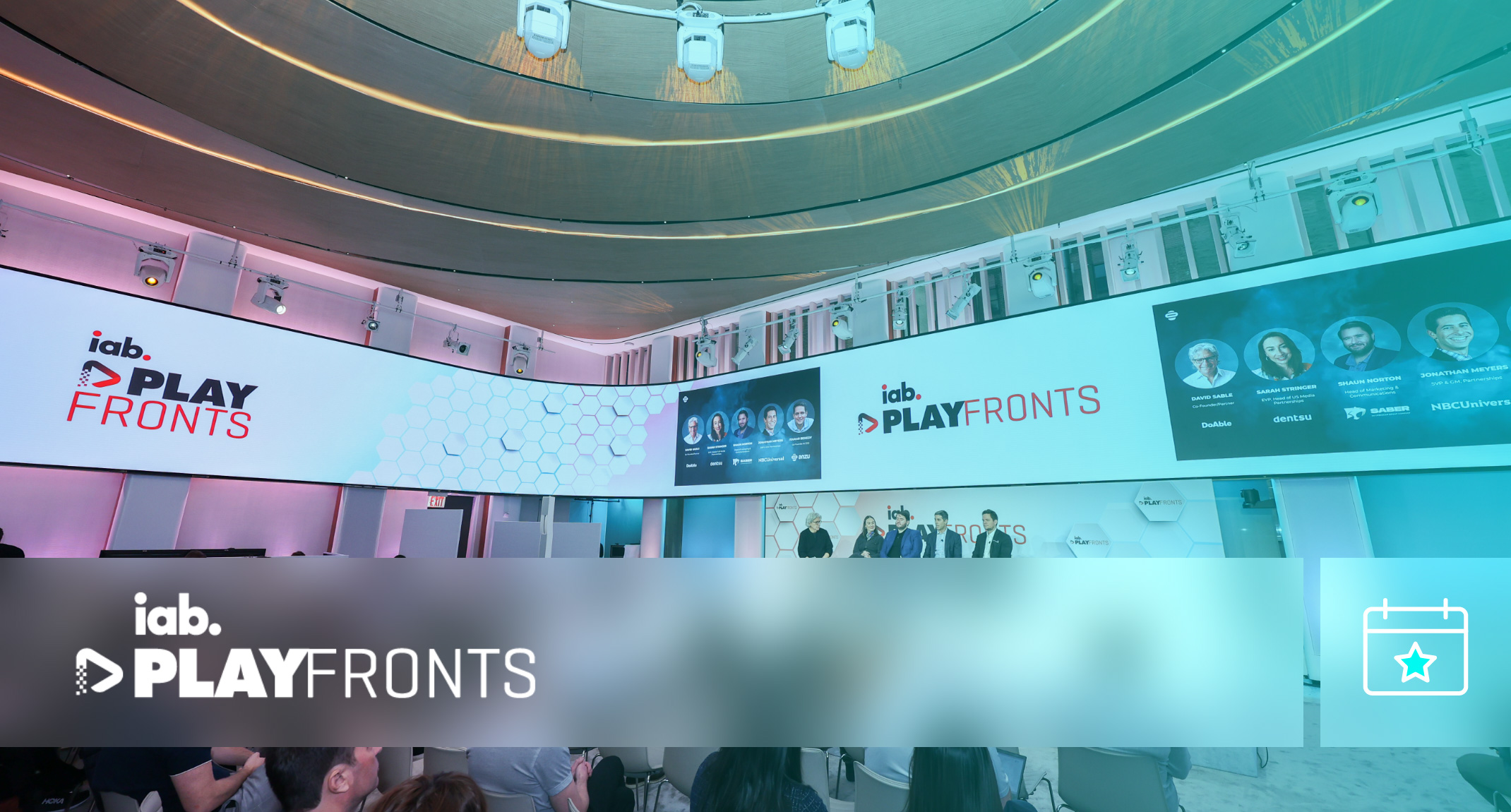
It’s Not That Easy Being Seen: How Advertisers and Publishers Can Conquer In-Game
Last week, Anzu reunited with NBCUniversal live on stage at IAB PlayFronts, discussing the current state of in-game advertising, how gaming is becoming one of the fastest-growing ad channels, and how brands have been leveraging games across the globe over the past 12 months.
Anzu’s Co-Founder and CEO Itamar Benedy was joined by Jonathan Meyers (NBCUniversal’s SVP and GM Partnerships), Sarah Stringer, (EVP Head of US Media Partnerships at dentsu Media US), and Shaun Norton (Head of Marketing and Communications at Saber Interactive, the studio behind the hit game Dakar Desert Rally). David Sable, former CEO of Y&R and industry veteran of over 40 years, moderated the panel.
Together, the panel of experts deep-dived into the potential that advertising in gaming offers for both brands and development studios, how focuses are shifting from viewability to attention in 2023, and how advertisers and developers can work together to provide gamer-approved experiences from intrinsic in-game ads.
Watch the recording from the event, or read the full transcript from their session below.
Full Video Transcript
Itamar Benedy: 5 and a half years ago, we founded Anzu. It wasn’t easy back in the day to sell to marketers why gaming should be an ad medium. A lot of marketers saw gaming as those geeks locked in their basement. A lot of the advertising standards were not there yet. So this is so exciting to see all of you here and making gaming an ad channel.
You know, in-game advertising is not a new concept. It’s very intuitive, it makes sense, and it’s easy to understand. There is branded content in games exactly how there’s branded content in the physical world. It’s the first business where my mother understands what I’m trying to do!
But in-game advertising, up until now, never happened. Yesterday, we had speakers that founded companies that are massive. Double Fusion. It never became a scaled, billion-dollar, multi-million dollar business as it should have.
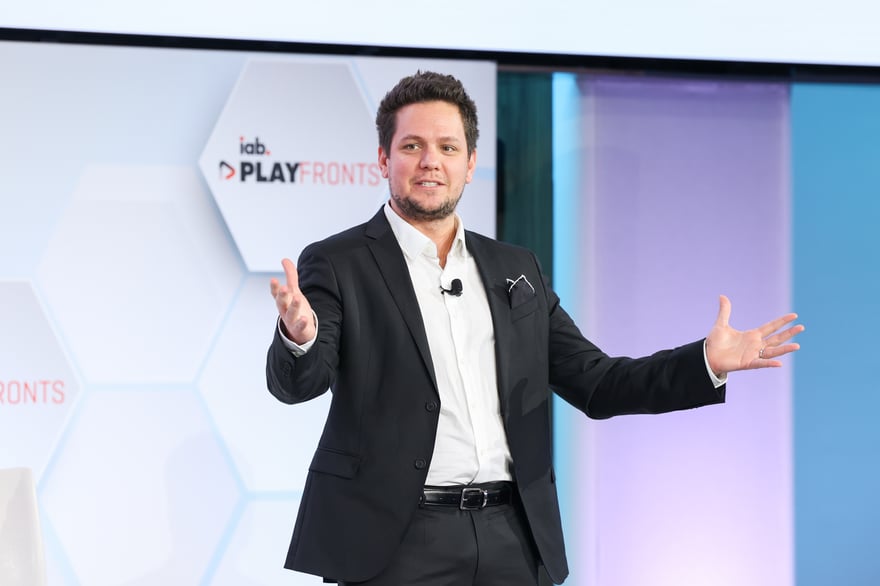
Last year, I was at Playfronts, and I was saying that COVID and quarantine was an acceleration for the metaverse and digital environments. Playfronts is going to be an acceleration for intrinsic in-game advertising. I was more than right! And now I’m excited to tell you that for the first time in gaming and advertising history, in-game advertising is happening, and it’s ready to scale.
A lot of companies supported us to get to where we are now. The IAB and the MRC for bringing taxonomy and standards in measurement. Companies like The Trade Desk that bring the programmatic pipelines and confidence for marketers. Companies like IAS that bring their verification and viewability solutions to marketers. The AAA publishers that have accepted this business model of monetization, and a lot of other companies in the space. So I’m super excited to bring our panel members to dive into why it’s happening now, and what we could expect moving forward. So let’s start!
Jonathan Meyers, SVP of NBCUniversal, one of our strategic partners. Shaun from Saber Interactive, part of Embracer Group, one of the AAA publisher with the hit of Dakar Desert Rally. We’re today speaking about advertising in gaming, but no AAA publisher that has monetized with advertising has ever joined us on stage. So Shaun, thank you for joining us. Sarah from Dentsu, one of the first agency executives to ‘get’ gaming. And the one and only David Sable. David, the stage is yours!
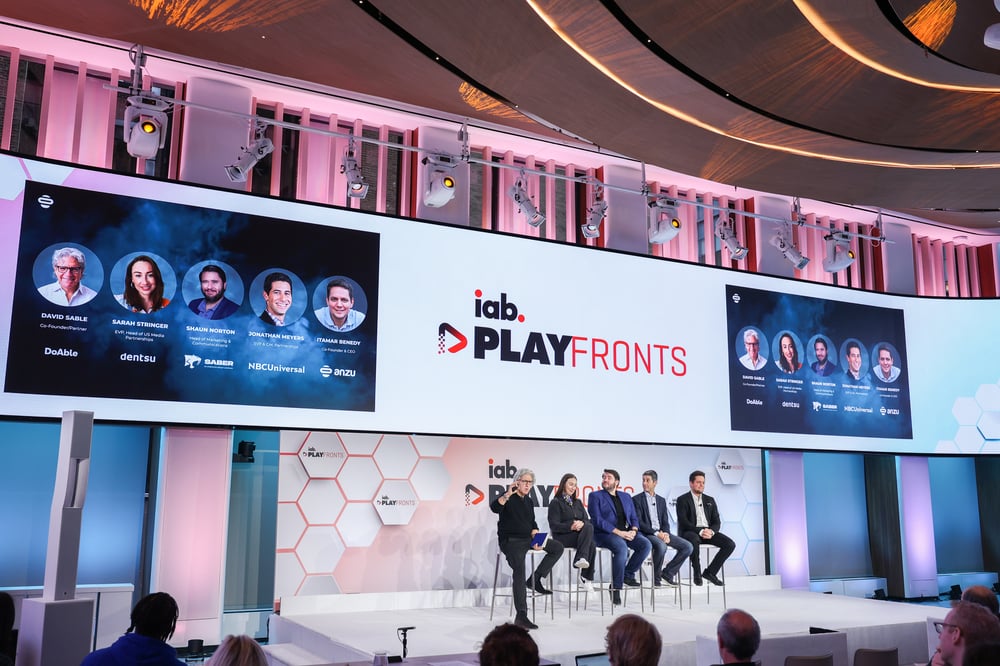
David Sable: So before we begin, I just wanted to say — and just take a moment — and really look around. I started my career going to Upfronts. Some of the greatest moments of my very very earliest career was going to an NBC Network Upfront, it was amazing. And over the years, I just watch how the Upfronts have morphed and evolved, and imagine that we’re sitting in Upfronts for games! We need huge applause just for that. I think it’s absolutely astounding, and I’m just so happy to be here. So let’s dive in.
Jonathan, I’m going to start with you, because a year ago, you and Itamar stood on this stage, you announced your strategic partnership… Maybe not the two of you, but it doesn’t matter — NBC and Anzu did, so I’m going to say the two of you! Scale premium content — that’s what NBCU is all about, that’s what created the business. Along comes Anzu, intrinsic advertising in games, it looks like a good partnership, it sounds like a good partnership. Tell us what it looks like a year later.
Jonathan Meyers: Thank you. It’s been an incredible year. As you said, NBCU has a long history of helping content creators realize their vision, and make money reaching hundreds of millions of passionate engaged fans, and similarly, we have a long history of building trust with marketers. As consumption habits change, we’ve helped both of those cohorts come into new mediums. When digital first came about, we spent years bringing marketers and bringing content into the space, most recently in CTV. So the opportunity to come into gaming with professionally-produced content and engaged, affluent audiences was a natural for us. And Anzu’s the partner that shared our vision, engaging with premium content and creating impactful advertising adjacencies. So we got to work with those cohorts.
Three areas that we’ve recently seen a lot of success in the last year — the first area is content. We’ve had in the last few months individually and collectively conversations with game publishers, developers, and platforms that a year ago we wouldn’t have dreamt that we’d be talking to. I think the content is on the cusp of really embracing in-game advertising across some of the biggest titles and platforms, which is really exciting. I think part of that is Itamar’s hard work and part of it is the legitimacy, relationships, and track record that NBCU has.
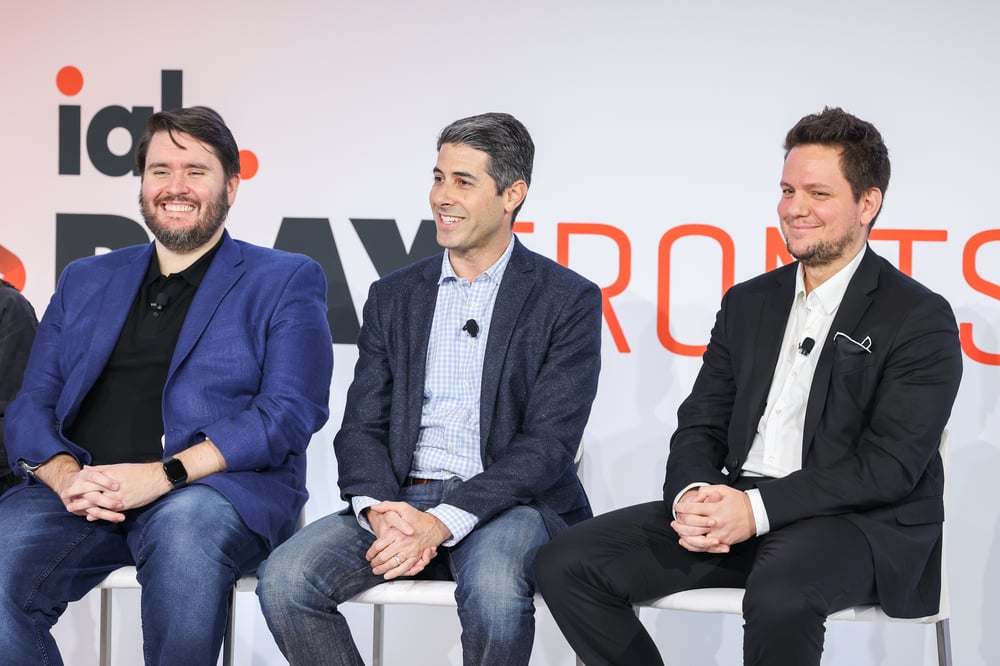
The second point is infrastructure. Before brands wholeheartedly embrace a medium, there are a litany of items that you need to go down on the checklist. I need to advertise against my target audience. I need to advertise against specific games. I need to be able to measure that my ads were served, I need to know that they were served to humans, I need to know that they were viewable, I need to serve dynamically, I need to run programmatically… There’s a litany of items, and over the last year, Anzu’s made tremendous progress, and now all of those things are possible. All of those things that brands need to know so they are in brand-safe environments, their ads are measurable and verifiable, have all happened. So we’re ready for maturity.
And the most important part is marketers. We have an amazing sales team that’s focused on Anzu — Jen Wolff is here, she leads the team — we have had an incredible response in the industry. There is an outpouring of calls and we’re starting to see real traction from blue-chip brand advertisers, and you’re seeing it even with the CPG advertisers that are typically more conservative when it comes to financials, where they have not only brand reputational risk but legal and regulatory concerns, and now they are engaging with us, they’re running in gaming specifically, they’re running across platforms…
So imagine, for example, you’re Audi, and you’re advertising in the World Cup. Every time (hopefully team USA) scores a goal, an Audi runs across the screen. And now we’re selling that same concept whether you’re on linear, you’re on Peacock, and you’re in a game. It’s a really powerful combination.
David Sable: Just to give NBCUniversal a shoutout. Some of you might have been there about 6-7 years ago, when they actively put on the first conference of any other network, so that everybody else was predicted “linear TV was dead”, “advertising was dead”, “cable was dead”... “The only other thing that would exist would be some kind of digital UGC”, and they had the courage to stand up in front of our industry — and this was when I was at Y&R — and had the courage to say “No guys, you’re all wrong, one day you’re going to see.” And I just love that we’re sitting here today talking about gaming. Itamar, how has it changed Anzu over the course of this first year?
Itamar Benedy: Yeah, maybe two main points — number one, trust. A lot of marketers understand they want to seize the gaming opportunity, but it was a new medium for them, and NBC really bridged this gap of giving them the trusted partner to start and learn what gaming is and how to benefit from it. For us, it was a bit more complicated to do organically.
Another thing is this client partnership. So yesterday, the IAB spoke about this gap of how brands, agencies, publishers, and AdTech vendors see this situation, and there’s the big gap. NBC has been a great partner in bridging these gaps, and bringing more understanding about real possibilities, concerns, and how to address them.
David Sable: So, has anybody here played Dakar? So, Shaun, I’m embarrassed — so here’s the thing, guys, anybody that goes on tonight there might not be any cars left, because I’ve been playing incessantly, and I think I destroyed every single car, and destroyed all of our advertising! I apologize. But, you guys made a decision to look at intrinsic in-game advertising. You also made a decision to be ad-supported, not ad-interruptive. So a) why did you make that decision, what drove you? And the second question is, what process did you look at to decide who your AdTech partner would be?
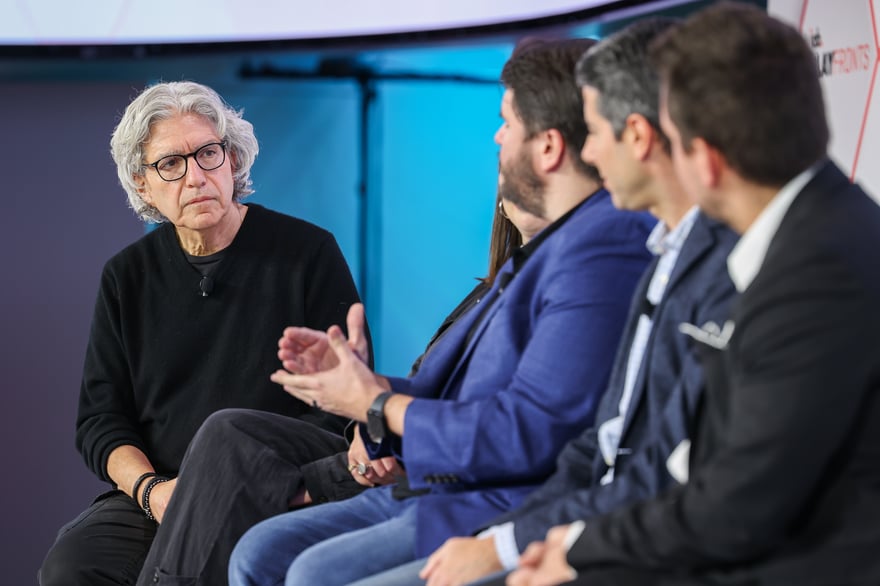
Shaun Norton: Well, it sounds cliché, but it’s a brave new world. You opened the talk with where we were versus where we are now — it’s easier than ever to do that. So with Dakar, for example — a little bit of a niche in the US, but it’s a huge rally event in Europe — you have this opportunity to bring in intrinsic advertising and not disrupt the players’ experience by it. It actually enhances it in a lot of ways. Billboards, the bivouak where drivers are getting ready to do their thing, driving through… You as the player are still doing what you do, but you’re not being stopped by advertisements. Instead, it’s enhancing that experience. And so this was one of our first times doing that, and at Saber, we have all kinds of different games. This is a racing game for us, we’ve worked on games like World War Z, like Evil Dead, that don’t necessarily lend themselves to that. But as you get more and more realistic with sports games and racing games and simulation games where you can go throughout New York City or San Francisco or wherever, and put these advertisements up on billboards and on buses and stuff like that, there’s ways to bring that to players that haven’t really been easily done before. So when we partnered with Anzu, they had a vision, we had a vision, they coalesced together and it just made sense. That sort of reputation and being brilliant at what they do, and then bringing other partners to the mix like other advertisers, content brands, and it was just a no-brainer for us.
David Sable: If you haven’t seen it or tried it, do it. The game itself is great, but it is really cool to see the advertising as you go through it. So, viewability. We all know, because we went through these wars with the social platforms, it took years to get viewability up on the roster, until we got them to agree that just having it pass by in the feed was definitely not viewability, right? It took us forever! And the gaming industry actually jumped into it. Anzu was a leader together with the IAB and others — viewability is last year’s story. This year, we’re talking about attention. Now, attention is interesting because the average, as I understand it, is about 8 seconds. You want to put that into ‘how many goldfish seconds’ that is! But attention is so important, and Dentsu is famous for its 5th year of attention economy, this is very important to you. Tell us a little bit about the attention economy, and then what does that mean? What do the 8 seconds mean? Put it into some perspective for everybody.
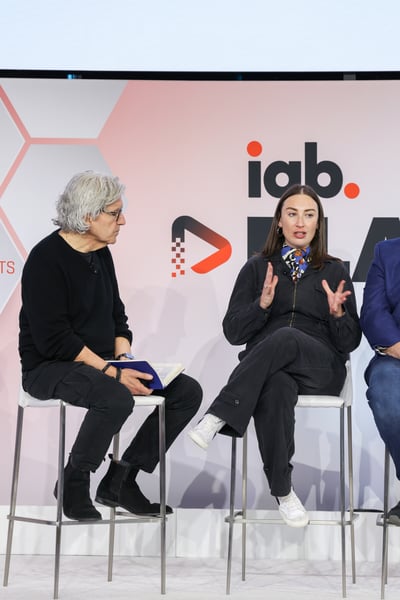
Sarah Stringer: Absolutely. So, as an industry, we’ve been looking at different ways to measure success on campaigns beyond just reach and frequency, because at the end of the day, TV has been heralded as the big brand moment, but all the time I’m in the bathroom, making a cup of tea, maybe you’re actually not there. And we said there’s probably a better way of us looking at ‘is there an impression actually served’, ‘is there someone in the room’... And what is the impact of, say, the audio even if your eyes aren’t on the screen. Five years ago, we started the journey with TV, and we mapped out what the impact and average based on different types of genres, different types of programming, and what the average attention was. We then expanded that into social, and so we looked at social video and we spanned across the main social players, and now we’re expanding into different mediums which includes gaming. And when we think about gaming, gaming’s really interesting because we talk about it as ‘unbreakable attention’, because the reality is, if I’m watching 90 Day Fiance sometimes and I decide ‘this is a bit boring, I’m going to look at my phone’, you can’t do that if you’re playing a game. If you take your eyes off-screen, if you’re not playing, guess what? You’ve not achieved whatever you’re trying to achieve, you’ve probably died, you’ve fallen off the track, whatever it may be. So the reality is, when you see ads in that environment, you are so immersed in that environment that the impact is actually greater. So, through our attention economy work, what we’re trying to do is essentially create an apples-to-apples comparison against different types of media. So gaming has completely embraced it, because they believe and trust what they’ve got, which is a really amazing, immersive environment, and as we move from mobile gaming to casual, super-short hits of amazing branding moments, we’re now looking at the expansive ways we can start looking at AAA titles, how we can build out more immersive brand experiences that really add to the narrative that is going on within those titles.
David Sable: Very cool. And Itamar, you have a partnership at Lumen, you’re actually studying this, you’re actually measuring it.
Itamar Benedy: Yes. I would say three things — number one, there was never 3D inventory available in a programmatic way, so we see amazing attention coming also from that fact — 3D environment versus 2D. Number two, we have this tool that with game publishers, before they go live, they see the viewability of the placements to make sure it’s 100%, because clients only pay for 100% viewable impressions, IAS and Moat audited, and we see this correlation of viewability brings better attention. And number three, we see that video ads combined with display ads and ads served on bigger-screen games also yield better attention. There are a lot of different ways to optimize attention to give more value to marketers to lean in more to the space.
David Sable: So now, for the creative agencies, there’s a new challenge. Something that we haven’t seen before, it’s kind of new, and like any other new channel and new medium, having the right work is very important. It always amazes me that on the video side, we have people talking about cheaper and quicker, and yet the work that we put our advertising next to is neither cheaper nor quicker! So who wants to have their advertising that’s crappy-looking next to incredible production? And I think that’s really the same issue here as well. So let’s just take a minute to show everybody what some of the creative looks like so you get a sense.
But you get a sense of the importance of the integration of the advertising, not just into the game, but into the lifestyle of what it is. So Shaun, you’re a developer, so you’re developing the games. What do advertisers need to learn? What do advertisers need to think about when creating creative for the games?
Shaun Norton: There’s no Dakar up there, so we’re already on the wrong foot! I think you guys already touched on it — it’s going to vary by game, it’s going to vary by mobile versus console, by sports versus simulation. It’s the traditional thing of you still need to know your audience, but at the same time, that audience is going to be pretty targeted based on that game, and art side, and publishing side, and development side, we have that data where we can say ‘we’re making a football game which span a lot wider’, right? If we’re making a hardcore shooting game that’s going to take place in the city, or a bus simulation game, or whatever they are, advertisers can then work together with teams like ours and say ‘we know for a fact that it’s going to be 18-34 year olds, predominantly male, and they’re going to spend this much time in the game, and this is their sort of spending habits’, and they can target those ads. Sometimes, that’s going to be just like it would be on mobile or TV, and sometimes it’s going to be directly to that gamer who isn’t watching anything on TV anymore, who’s only doing Netflix for one part of the day and PC gaming for the other.
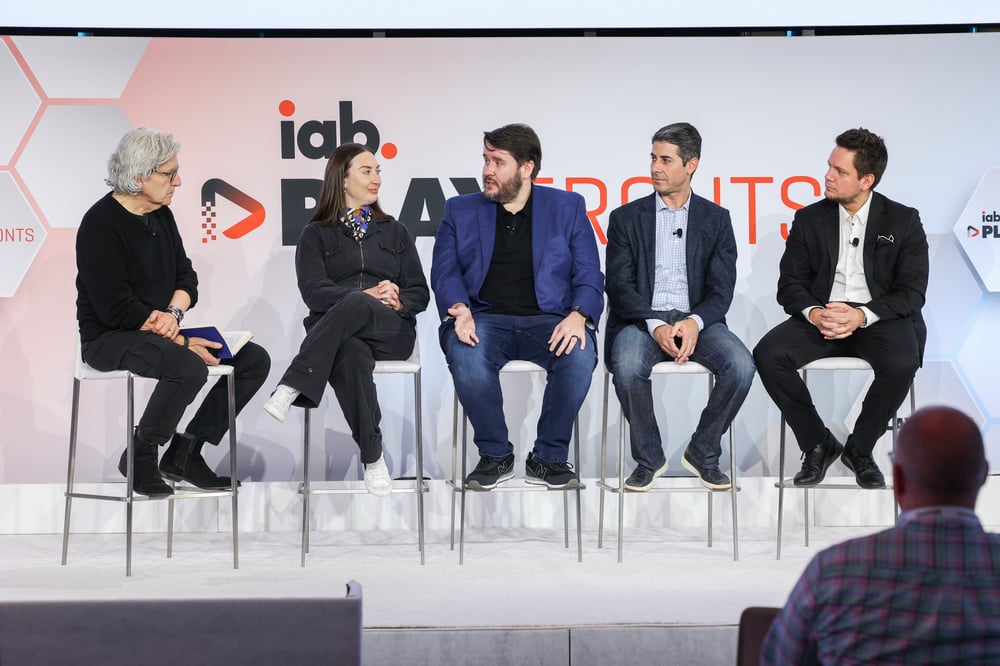
David Sable: Sarah, what are you telling your creatives?
Sarah Stringer: Think of it a bit like what you would an outdoor poster anyway. I learnt back in the day, 7 words or less is a good poster. Too many words, you’re not going to see it. It’s really the same for in-game ads — no-one’s actually there to look at the ads, they’re there to play the game, so you still need to get to it as soon as you see it. Something that was funny that you said earlier about ‘you don’t put ads in zombie games’, but I’m hoping at some stage we will, but we’re going to create so many different genred ads, that you’ll have a dilapidated billboard that will have your brand but in zombie-world, that will still look right for the environment, but it will just be super self-aware of the environment it’s in. So when you start building out a creative suite, you’re going to think of hyper-realistic, what is a medieval joke that you could put for your product, what is the apocalyptic version of your brand… We haven’t even scratched the surface of how creative we will be able to get with the different titles that we would be working on.
David Sable: I agree. We have one minute left, so we’re going to end on time, and so you all get one quick wrap-up. Take your pick, you can go either way — what do we see in intrinsic in-game advertising this year that we haven’t seen? What do we see in gaming that we might not have seen? What might we see in cross-platform?
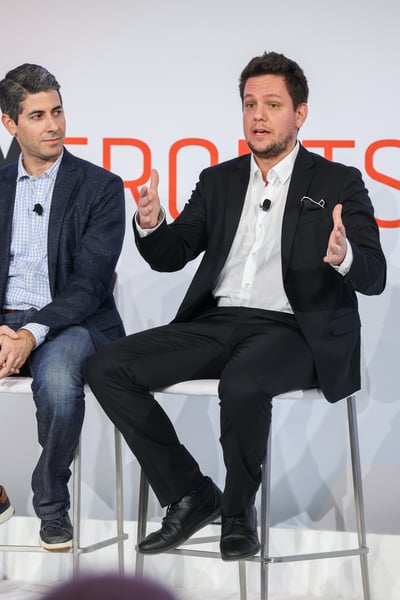
Itamar Benedy: In-game advertising is moving from standalone test campaigns towards an omni-channel activation where gaming is one channel with other digital medium.
David Sable: And offline as well. There are advertisers who are looking at how do they take their online intrinsic gaming and take it offline and create an even bigger experience for the players, which is really cool.
Jonathan Meyers: This is the transformative year, that all the hard work and investment will pay off. You’ll see a virtual cycle start to accelerate, where there’s going to be more AAA content integrating ads into games, and that will in turn bring more brand marketers to spend in larger amounts in confidence. That cycle will accelerate and accelerate as the medium matures.
Shaun Norton: Gaming is bigger than it’s ever been, and it’s going to keep growing — it’s probably the biggest form of entertainment right now, with billions of dollars spent every year on buying them, and they’re more realistic than ever and they’re more diverse than ever. Really, to your point about the transformative year, the sky’s the limit now — for realistic games, for arcade games, and everything in between. Put all your ads in our games, thanks so much!
Sarah Stringer: Inclusivity. Everyone here probably plays a game, it doesn’t matter if you’re a mum, if you’re a grandpa, if you’re a kid… everyone is playing games, and we need to throw that out. Also, stop being judgy about the platform. At the end of the day, we’re all playing games. A big trend in the market is free-to-play cross-platform, so don’t just worry about someone on one platform and pigeonhole them. Different types of people are playing the same games cross-platform, so be inclusive in your thinking about it.
David Sable: Itamar, Jonathan, Shaun, Sarah; thank you all very much. Guys, go out and buy! Buy, buy, buy!